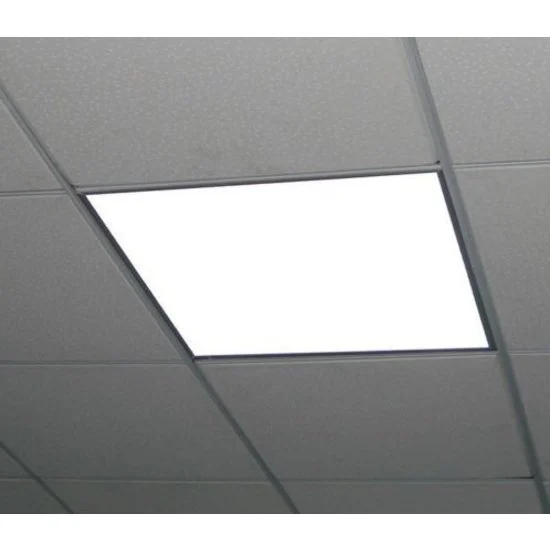When renovating or designing a space, the ceiling is often overlooked despite its significant impact on the room’s aesthetics and functionality. Flexible drop ceiling tile offer a versatile solution that combines practicality with design flexibility. This article explores the benefits, features, and considerations of using flexible drop ceiling tiles in your home or office.

What Are Flexible Drop Ceiling Tiles?
Flexible drop ceiling tiles, also known as suspended ceiling tiles, are panels that hang below the structural ceiling using a metal grid. Unlike traditional ceiling tiles, flexible options are made from materials like PVC, vinyl, or fiberglass, which allow them to bend or adjust to irregular surfaces without cracking or breaking.
Read too: Discovering the Charm of Nautical Outdoor Ceiling Fans for Your Coastal Retreat: Sail into Style
Benefits of Using Flexible Drop Ceiling Tiles
1. Versatility in Design
Flexible drop ceiling tiles come in various colors, patterns, and textures, allowing for a wide range of design possibilities. Whether you prefer a modern, sleek look or a more traditional style, there’s a flexible tile to suit your aesthetic needs.
2. Easy Installation
These tiles are lightweight and easy to handle, making installation straightforward even for DIY enthusiasts. Their flexibility allows for easy fitting around obstacles like pipes, ducts, or uneven surfaces.
3. Cost-Effective
Flexible drop ceiling tiles are generally more affordable than rigid alternatives. They can also reduce energy costs by providing an extra layer of insulation, helping to maintain a consistent temperature in your space.
4. Sound Absorption
Many flexible drop ceiling tiles have sound-absorbing properties, which can enhance acoustics in a room. This feature is particularly beneficial in offices, classrooms, and entertainment rooms where noise control is important.
5. Moisture Resistance
Materials used in flexible drop ceiling tiles are often resistant to moisture and mildew, making them ideal for use in basements, bathrooms, and kitchens where humidity levels are high.
Key Features of Flexible Drop Ceiling Tiles
Durability
Despite their flexibility, these tiles are designed to withstand wear and tear, maintaining their appearance and functionality over time.
Ease of Maintenance
Flexible drop ceiling tiles are easy to clean and maintain. Many options can be wiped down with a damp cloth or mild detergent, making them a practical choice for high-traffic areas.
Fire Resistance
Some flexible drop ceiling tiles are treated with fire-resistant coatings, enhancing the safety of your space by slowing the spread of flames in the event of a fire.
Customizability
With a wide range of finishes and designs, flexible drop ceiling tiles can be customized to match your specific design requirements, adding a personal touch to any room.
Installation Guide for Flexible Drop Ceiling Tiles
- Measure Your Space: Begin by measuring the dimensions of your room to determine how many tiles and grid components you will need.
- Prepare the Grid System: Install the metal grid framework, ensuring it is level and securely attached to the ceiling joists.
- Cut the Tiles: If necessary, cut the flexible tiles to fit around obstacles or edges. The flexibility of the material makes this step easier than with rigid tiles.
- Install the Tiles: Place the tiles into the grid, starting from one corner of the room and working your way across. Ensure each tile sits flush with the grid for a clean, professional finish.
- Finishing Touches: Once all the tiles are in place, inspect the ceiling for any gaps or misalignments and make adjustments as needed.
Where to Use Flexible Drop Ceiling Tiles
Residential Spaces:
- Basements: Moisture-resistant and easy to install around ductwork.
- Kitchens: Provides a clean, sleek look with easy maintenance.
- Living Rooms: Enhances the design with various styles and textures.
Commercial Spaces:
- Offices: Improves acoustics and aesthetics while being cost-effective.
- Retail Stores: Adds to the ambiance and can be customized to fit the store’s branding.
- Healthcare Facilities: Easy to clean and maintain, promoting hygiene.
Maintenance Tips
- Regular Cleaning: Wipe down the tiles with a damp cloth regularly to remove dust and grime.
- Inspect for Damage: Periodically check for any signs of wear or damage and replace tiles as necessary.
- Maintain the Grid: Ensure the metal grid remains secure and level to prevent tiles from sagging or shifting.
Conclusion
Flexible drop ceiling tile offer a practical and aesthetically pleasing solution for both residential and commercial spaces. Their versatility, ease of installation, and maintenance make them an ideal choice for anyone looking to enhance their ceiling design while maintaining functionality. By understanding the benefits and features of flexible drop ceiling tiles, you can confidently choose the best option for your next renovation project.




